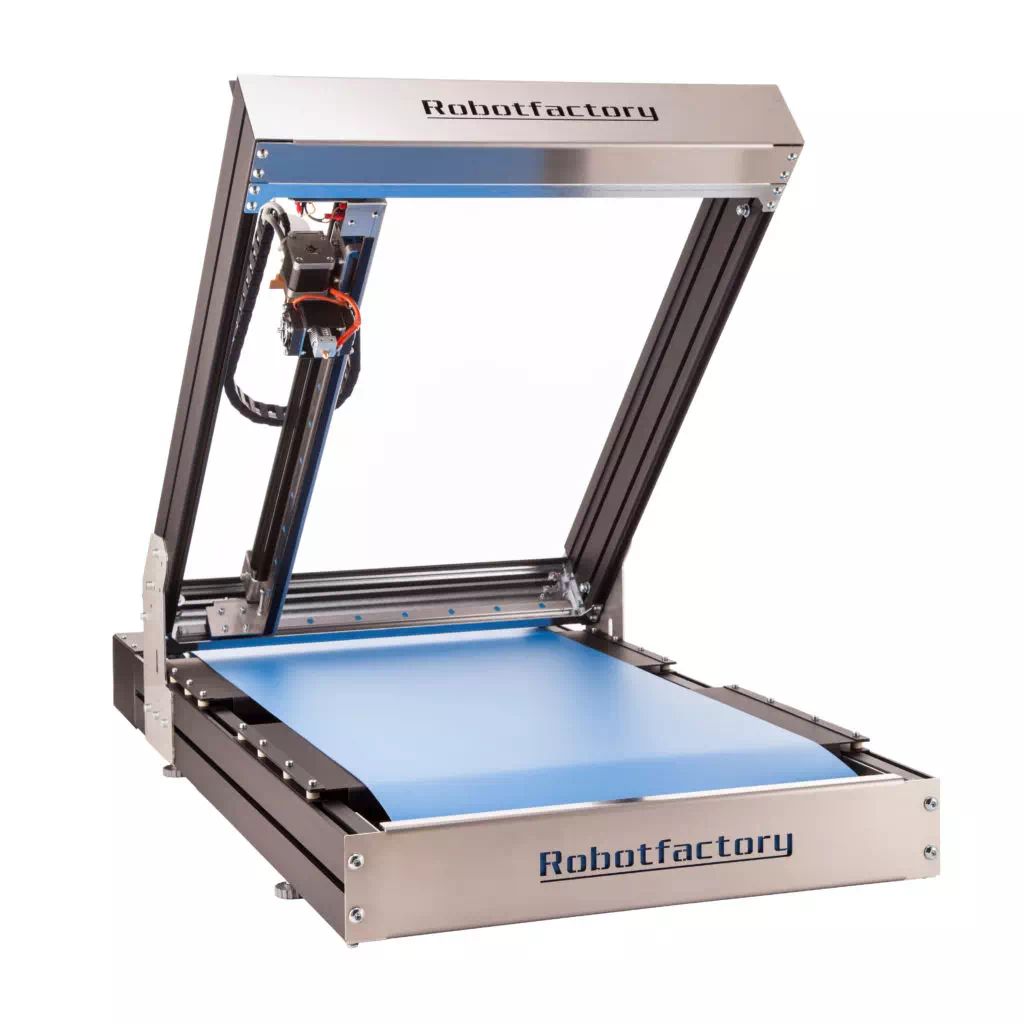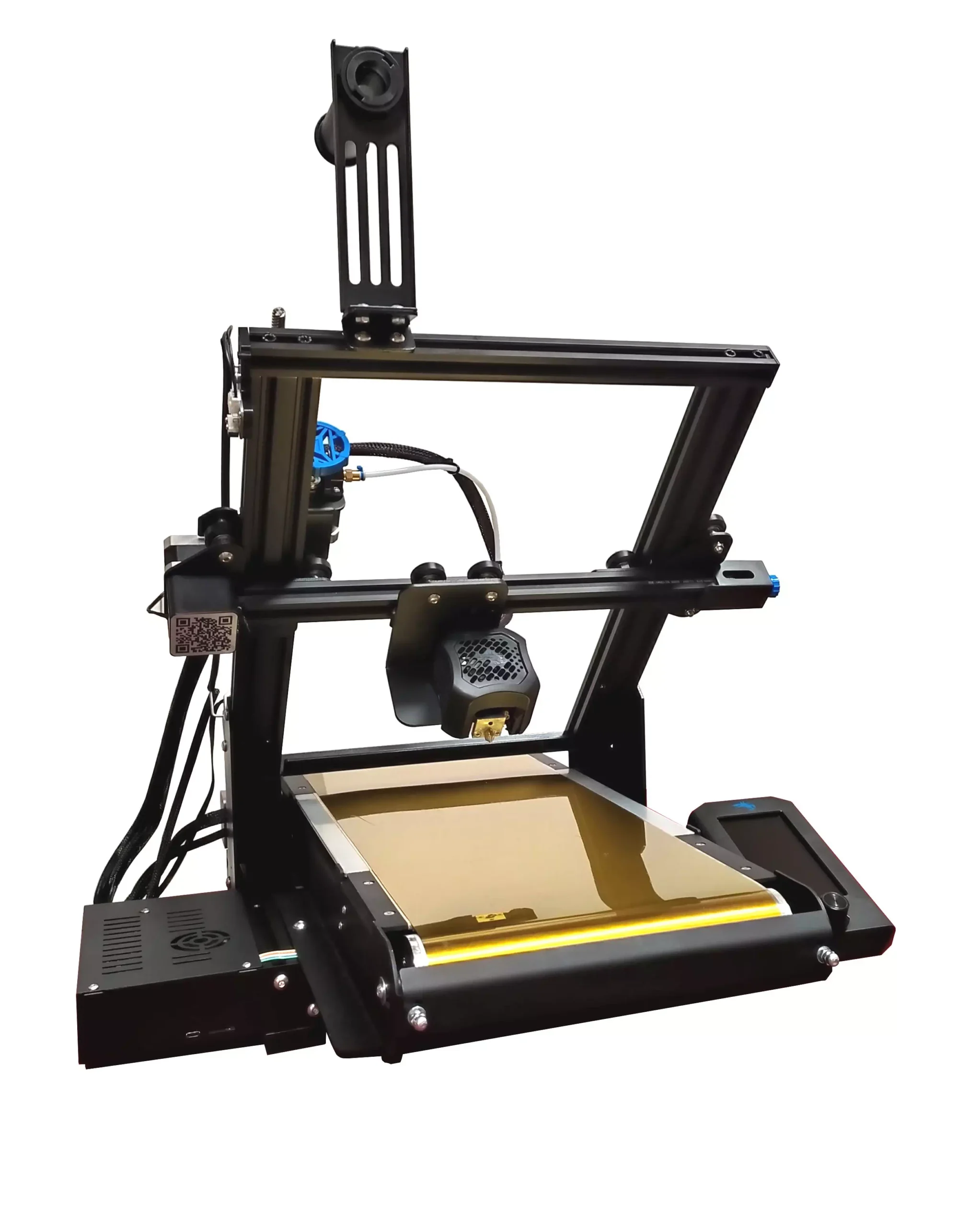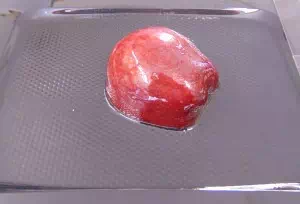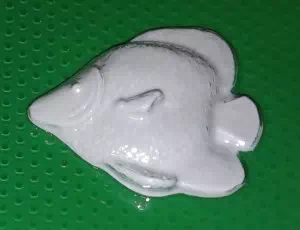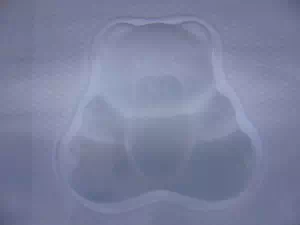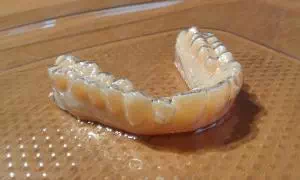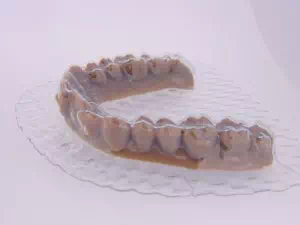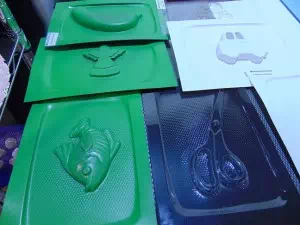3D FORMING - THERMOFORM
A new very simple chance for 3D molds!
Thermoforming is an old technique of transformation of the thermoplastic materials, the thermo forming process, it is already very commonly used in industrial processes to obtain every kinds of molds all over the world – to give form to the material using increasingly complex and innovative techniques. This technique has found a big application in the production of objects, or parts of objects, for a large variety of uses, and sometimes the same technique supports actual forms of art…Modern economic reality requires products with a much shorter life cycle compared to the past, but it is increasingly demanded the customized production based on the needs and tastes of customers. This trend of rejection of the mass production, for the benefit of the customization of finished product, makes very appealing the thermo forming technique, but to do so it must make use of processes not properly ‘industrial’.
With the 3D FORMING, it becomes far easier to use the thermo forming technique in settings with small numbers of users, where it is reduced the number of parts to be produced , but it is required the maximum production flexibility (lots of different finished parts), with very thin thickness (on the sides of mold) and requested size bigger than a few millimeters.
In fact, Robot Factory developed the 3D FORMING system – professional thermoforming for the production of finished objects and / or 3D molds in various thermoplastic materials – for make objects of various shapes and use.
3D FORMING uses a sheet of thermoplastic material, made malleable by heat, positioning this one on an object (a template), when the air (between the object and the sheet) is removed, the sheet takes the form of the template.
3D FORMING is a system that allows the creation of more and more applications, taking advantage of the ‘flexibility’ which is characteristic of this technique. We mention only some of the application fields in which it can be used:
3D FORMING …AT SCHOOL
With the introduction of the 3D FORMING system in the School, thermoforming can be used in the learning environment to develop the pupil’s interest, involving them for create 3D thermo-formed items, useful for learning purposes.
Two videos resumes a classroom activity using the 3D FORMING system within the “3D FORMING …at School“, our latest ambitious Project, documenting a concrete example of use of 3D Forming in the Classroom.
The videos show how, in the first phase, the Teacher is involved in making the molds, but the complete activity is carried out in close collaboration with the pupils. On the other hand, the children, appropriately directed, have a proactive approach, and they participate first to the choice of templates, then to the decoration of the obtained objects.
The process shown in the videos, it makes easy and spontaneous to capture the idea of three-dimensionality and the obtained objects can be helpful to any school matter.
In the next video, Robot Factory presents a tool for 3D Forming system, a support for the multifunction tool “Bosch PMF 220 CE” (a vibration tool) to easily cut the shapes made using 3D Forming. This system allows to cut the edges of the thermoformed piece, in a smooth, precise and ‘safe’ manner, obtaining finished products, as well as containers for presentation packaging, view video…
Application fields:
in general in all fields in which you need to use the molds: decorative arts, gastronomy, pastry, lighting, customization common objects, packaging, gadgets, jewellery, parfumes, watches, eyewear, modeling, toys, antiques, etc.
The thermoforming process is fundamental in the field of dentistry for the production of transparent orthodontic aligners, using a 3D printed model with high resolution (such as those obtainable with 3D printers that use the DLP technology), printed using rigid and temperature resistant material.
with the 3D FORMING system, the thermoforming can be also used in schools to develop interest of pupils, involving them in the construction and decoration of the objects produced by this system. In the context of teaching this device can be a great aid for the creation of learning objects usable in case of dyslexia, visual impairment, and in general in cases of learning difficulties. In the schools in which there are already 3D printers, 3D printed objects can be used as templates for the thermoforming.
In general, the 3D prints can be used as templates for the thermoforming of objects of various use. In addition, the thermoplastic sheets may be previously color printed, and then used for create, with the 3D FORMING system, objects of various shapes, already decorated.
The main steps of this process can be schematically shown as follows.
Robot Factory, during the realization of 3D FORMING, has taken account of safety standards, therefore, the system has been developed and manufactured using some specific shrewdness:
- the shield (mirrored stainless steel) of the heating element, is ceramic fiber insulated
- the use of a structure completely stainless steel, ventilated through the holes of the logo
- the availability of certificate for use the thermoplastic material with the food
- the recyclability of material (for producing recyclable items).
The goal achieved is a very attractive system for all those who might use this technology, in total safety, for develop teaching tools, for design of tools for pastry and gastronomy, for pagkage design, to realize customized display stands, samples containers and product presentation articles, for handmade gift, and so on… giving, at the same time, a device that is simple, easy to use, that requires a minimum time of training.
The 3D FORMING system allows to print easily thermoplastic materials (usable in sheet) from 0.2 to 1 mm thickness. It can be used with many materials, below some of these materials:
PS (Polystyrene) – used for packaging products
PC (Polycarbonate) – used for bottles, etc.
PP (Polypropylene) – used for domestic objects
PE (Polyethylene) – used for packages, bottles, etc.
PVC (Polyvinyl Chloride) – used for plastic pieces, etc.
PMMA (Polymethylmethacrylate) – used in Designer lighting
ABS (Acrylonitrile Butadiene Styrene) – the same used for Lego bricks.

The material supplied by Robot Factory, as consumable, for use with the 3D FORMING system, it is non-toxic (food compatible) and recyclable:
- PETG (Polyethylene Terephthalate modified with Glycol) certificate for the contact with food (commonly used for pastry/gastronomy molds)
- HIPS (High Impact Polystyrene) certificate for the contact with food products (commonly used for packaging and for disposable dishes).
3D FORMING is supplied with a endowment of these materials (some sheets of PETG and HIPS) to get started.
The material, available for use with the 3D FORMING system, is supplied in sheet of A4 size (297 x 210 mm).
Robot Factory production is MADE IN ITALY.
- Technical Specifications
- Media
- Documents & Download
- Info
- Prices
| Overall dimensions | 460 x 260 x 380 mm | |
| Weight | 9 Kg approximately | |
| Useful size for process | 250 x 170 x 120 (mm) | |
| using flat adapter: 120 x 100 x 120 (mm) | ||
| Power supply | 230v / 50-60Hz / 600W / 2.6A | |
| Suction tube | 180 cm / Ø 32 mm | |
| Adapters for vacuum cleaner | Ø 54 mm, Ø 57 mm, Ø 60 mm | |
| Declaration of EC conformity | ||
| 1 (one) year of warranty | ||
The prices of the product with related accessories will be provided on request.

